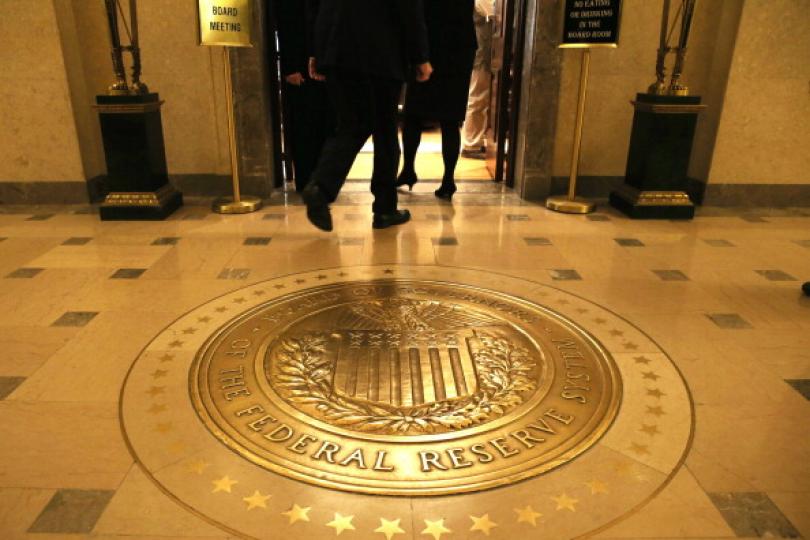What Investors Need to Know About the U.S. Government’s Borrowing Plans

The Treasury Department is set to release its latest borrowing plan on Wednesday, a once-routine event that lately has fueled market swings thanks to concerns about the federal budget deficit.
Each quarter, the Treasury’s so-called refunding announcement offers investors a breakdown of how the government will borrow money to make up for the gap between its revenue and its spending.
That has become more important as the sums involved have grown. Investors are especially eager to know how much short-term Treasurys will be sold versus longer-term bonds, a decision that can have major implications for borrowing costs across the economy.
Here is what to know ahead of the Wednesday’s announcement, which will take place hours before the Federal Reserve concludes its two-day policy meeting:
Not so sleepy anymore
Treasury officials would like refunding announcements to be boring—low volatility helps keep government funding costs low—but that hasn’t been the case recently.
The dangers of large deficits became apparent in August, when larger-than-anticipated borrowing needs drove officials to increase the size of longer-term debt auctions by more than investors expected. The announcement dealt a fresh blow to a market already under pressure from speculation that the Fed would keep interest rates higher for longer. The yield on the 10-year note touched 5% in late October for the first time in 16 years.
Investors got a second surprise at the next refunding on Nov. 1 when the Treasury increased longer-term debt auctions by smaller amounts, leaning instead on short-term debt. That helped spur a reversal in longer-term yields, which set a floor on interest rates on everything from mortgages to corporate bonds.
Calmer outlook
Market conditions heading into Wednesday’s refunding are much calmer than they were last fall. Treasury yields have fallen sharply since their October highs, though they have bounced back a little this year.
Confident that the Fed will start cutting rates this year, investors have warmed to bonds, making the prospect of increasing auction sizes seem less daunting.
Many on Wall Street expect that the Treasury will increase auctions by the same amount as it did in the previous quarter. That means, for example, that it would increase the sizes of 2-year and 5-year note auctions by $3 billion each month over the next three months, while boosting 10-year auctions by $2 billion over the previous quarter.
Officials have already signaled that the Treasury will likely take a break from increasing auction sizes after this refunding.
Uncertainty remains
Even so, it isn’t as if investors have gone back to the days of ignoring the refunding. There is still uncertainty about what officials will announce for the coming quarter.
Analysts at Barclays, for example, are predicting that officials will once again surprise investors by going with a smaller increase to the 10-year note auction, lifting it by $1 billion instead of $2 billion.
Their rationale is that despite the recent bond rally, the supply of Treasurys is still pushing up longer-term yields and that officials will remain sensitive about putting pressure on that part of the market.
Taking that approach would likely boost Treasurys, and drive down yields, at least on the margin.
At the same time, analysts caution that there is still risk that the refunding announcement could cause yields to rise—due to a specific decision or by broadly resurfacing investors’ concerns about the deficit and debt.
In the end, “the issues that caused the market to really back up a lot in the end of October are the same issues that we’re looking at again here: very large financing needs” and the prospect of larger auctions, said Thomas Simons, U.S. economist at Jefferies.
Wild cards
Beyond this week’s announcement, a few different factors could change the Treasury’s borrowing plans over the coming year.
One is the deficit itself, which can prove hard to predict. Through the first three months of the current fiscal year, it was running a bit larger than it was last year. Still, on Monday, the Treasury announced that it would need to borrow a little less in the current quarter than it had projected in November.
Another factor is what the Fed decides to do with its nearly $8 trillion portfolio of bonds and other assets.
In June 2022, the central bank started shrinking its Treasury holdings by $60 billion a month, allowing some of its bonds to mature without replacing them.
That process, known as quantitative tightening, has the effect of reducing bank deposits at the Fed. Left in place indefinitely, it would likely cause dislocations in short-term lending markets because banks would be less willing to part with their cash.
In a recent speech, Dallas Fed President Lorie Logan, who managed the central bank’s portfolio between 2019 and 2022, said it might make sense to slow the pace at which it allows its bonds to run off later this year.
The decision about when to start scaling back quantitative tightening and when to end it entirely matters for bond investors because the Treasury has needed to borrow more from investors to pay back the Fed as its bonds come due. The sooner the procedure ends, the less new debt the Treasury would need to issue.
Something new
A final wrinkle that investors need to consider is the looming introduction of the Treasury’s new program to buy back certain Treasurys before their maturity date.
One aim of the program is to support older “off-the-run” bonds that tend to attract less demand than newly issued Treasurys and are therefore harder to trade.
Funding these purchases could require the Treasury to keep auctions of new bonds larger than they would have been otherwise—although analysts are expecting the initial impact of the program to be relatively modest.
More details about the buybacks are expected to be released with the refunding announcement on Wednesday, including a possible launch date.




